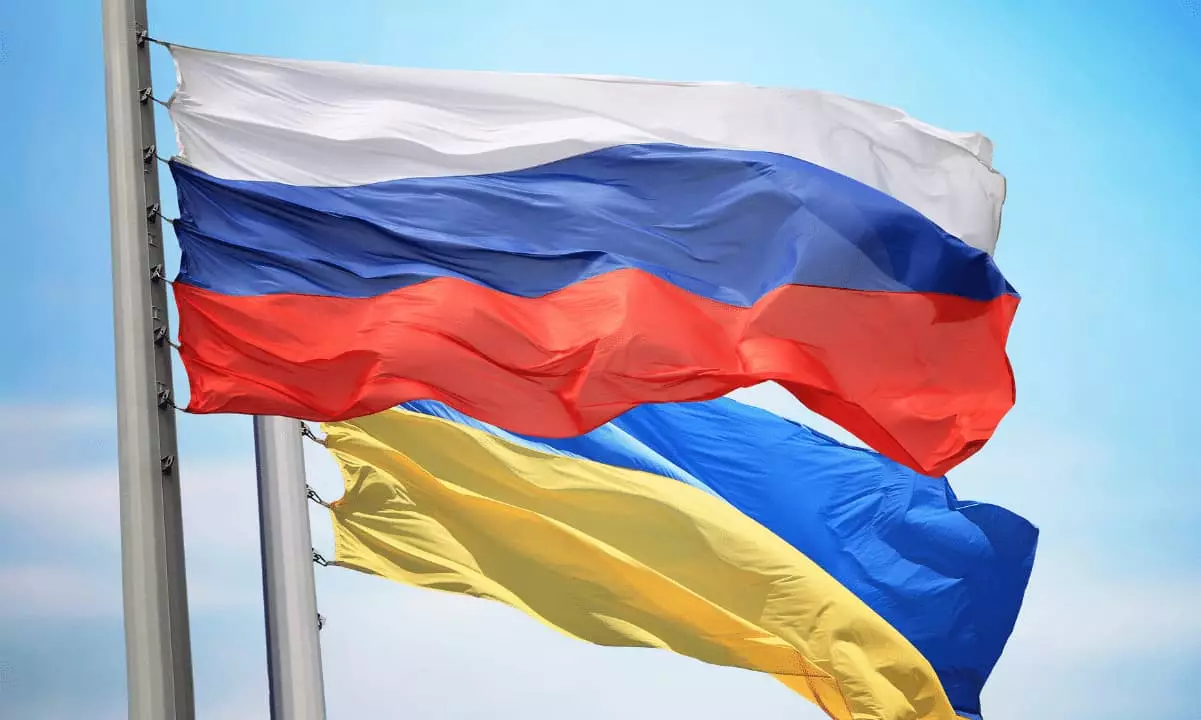The ongoing war between Ukraine and Russia has not only led to geopolitical tensions but has also fueled a remarkable surge in cryptocurrency adoption in these nations, according to the latest Global Crypto Adoption Index. As reported by Chainalysis, Ukraine and Russia are ranked 6th and 7th, respectively, showcasing their increasing significance in the global crypto economy. This upward trajectory is particularly noteworthy given Russia’s impressive six-spot rise from the previous year, a stark contrast to the challenging sanctions and conflict it faces.
Eastern Europe has emerged as a vibrant hub for crypto transactions, accumulating a staggering $182.44 billion in crypto inflows into Russia and $106.1 billion into Ukraine. The phenomenon of decentralized exchanges (DEXes) within Eastern Europe has played a crucial role in shaping these figures, experiencing an extraordinary increase in activity. Collectively, these platforms attracted around $149 billion in crypto assets, with Ukraine’s DEX inflows shooting up by over 160% to $34.9 billion, while Russia’s inflows rose by an impressive 173%, reaching $58.4 billion. This data reflects a robust inclination towards decentralized finance (DeFi) solutions in the region.
Both nations have demonstrated unique trends in DeFi transaction growth. Ukraine’s large institutional transactions—defined as those exceeding $10 million—soared by an astounding 361.49%, indicating that substantial financial entities are actively engaging with crypto assets. In contrast, Russia, along with neighboring countries such as Belarus, Poland, and Slovakia, has also seen an uptick in institutional transfers, capitalizing on the momentum of the crypto market.
Moreover, Ukraine has witnessed a striking rise in retail transactions, with small-scale transactions growing by approximately 91.99% and larger ones up by 82.29%. This grassroots adoption appears to stem from a need for everyday spending solutions, as residents adapt to economic uncertainties and ramping inflation rates, using cryptocurrencies as viable alternatives to traditional fiat currencies.
The landscape for crypto exchanges is undergoing significant transformation within Russia. Despite reports indicating stagnant traffic to centralized exchanges, there has been a notable increase in the usage of decentralized, no-KYC platforms. This shift is largely attributed to sanctions that have restricted access to traditional banking services, compelling individuals to turn towards cryptocurrency to safeguard their assets. As locals tap into these alternative platforms to convert fiat into digital currencies, the adaptability of crypto infrastructure is put to the test, revealing an innovative approach to circumvent financial immobilization.
As Ukraine and Russia navigate the complexities of ongoing conflicts and economic sanctions, their unexpected rise in cryptocurrency adoption reflects both nations’ resilience and adaptability. The surge in decentralized exchanges, the rise of grassroots participation, and evolving exchange dynamics underline a commitment to not just survive, but to thrive in the digital economy. This transformative period may redefine the future landscape of crypto, positioning Eastern Europe at the forefront of global financial evolution.

